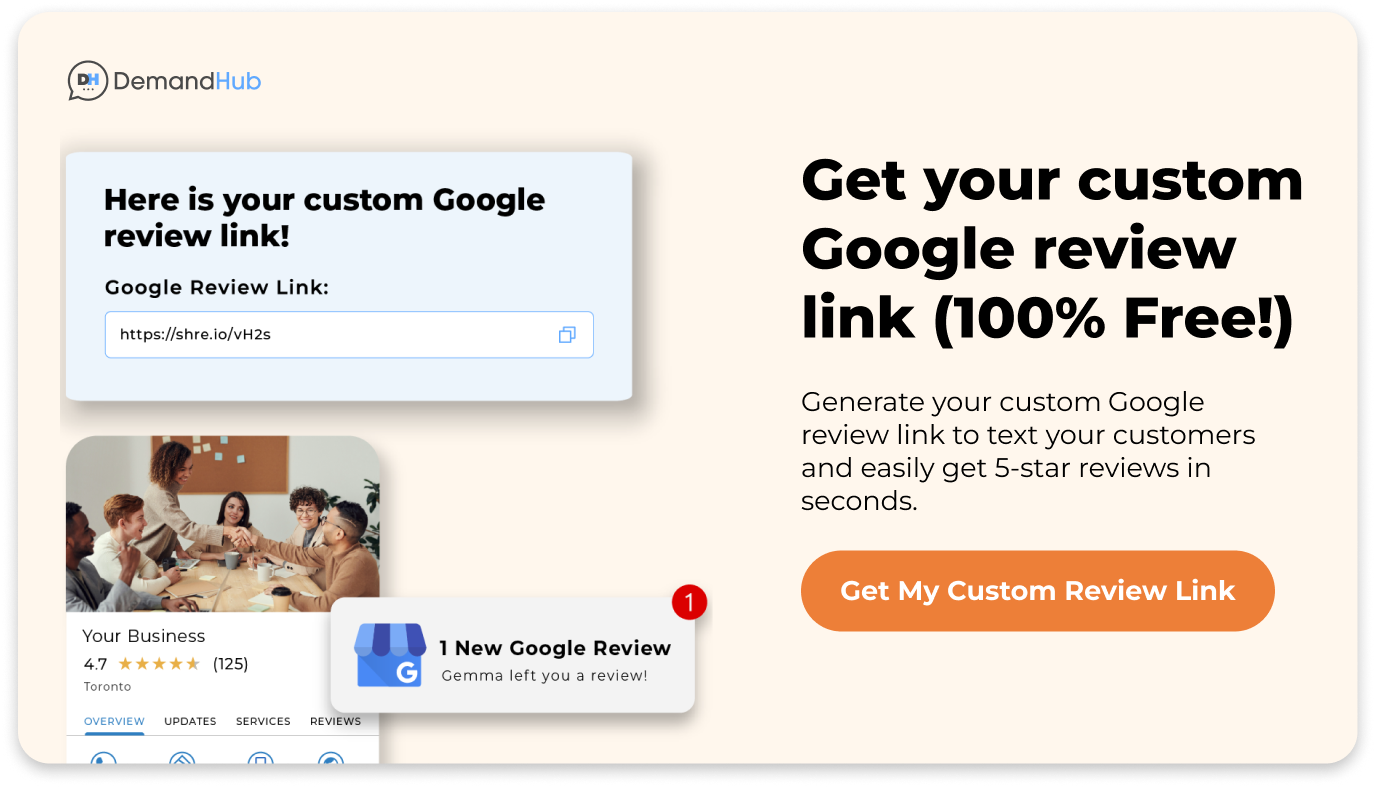
From the exam room to the boardroom, healthcare providers are on a mission to provide the best possible care while also growing their practice.
But providing top-notch care is just one piece of the puzzle to grow a practice.
As they also navigate the business side of healthcare — from attracting new patients to staying compliant with regulations.
The healthcare industry is very saturated. It can be hard to stand out in a crowded market like this.
In this blog, we’ll share 17 effective healthcare marketing strategies that can help you attract more patients and grow your practice.
From leveraging online reviews to utilizing social media and targeted advertising, these tactics will give you the tools you need to excel in today’s digital age.
Whether you’re a solo practitioner or part of a larger healthcare organization, these strategies will help you reach and engage more patients than ever.
What is Healthcare Marketing?
Healthcare marketing refers to the strategies and tactics used by healthcare providers, insurers, and pharmaceutical companies to promote their products and services.
It covers everything from traditional marketing techniques, such as advertising and direct mail, to digital marketing tools, such as social media campaigns and email marketing.
Healthcare marketing aims to educate and inform consumers about the benefits of different products and services and to increase awareness about them.
17 Healthcare Marketing Strategies That You Can’t Ignore in 2024
- Paid Advertisement
- Invest in SEO
- Create educational content
- Use messaging apps
- Email marketing
- Referral programs
- Build a responsive healthcare website
- Claim your Google My Business profile
- Leverage Social media
- Build a consistent brand
- Ask for reviews
- Follow up with consumer feedback
- Influencer marketing
- Video marketing
- Communicate effectively
- Content marketing strategy
- Manage your online reputation
1. Use Paid advertisement
Paid advertising is a powerful tool to reach a larger audience and promote healthcare services.
Leverage paid advertisements such as Pay-per-click, display ads, or Social Media Marketing to place targeted ads in front of potential patients. This can be a cost-effective way to drive traffic to your website and increase conversions.
What is Pay-per-click (PPC) advertising?
Pay-per-click (PPC) advertising is an online advertisement in which businesses pay a fee each time one of their ads is clicked.
The most popular form of PPC advertising is search ads, which show at the top of search results when someone searches for a keyword related to your product or service.
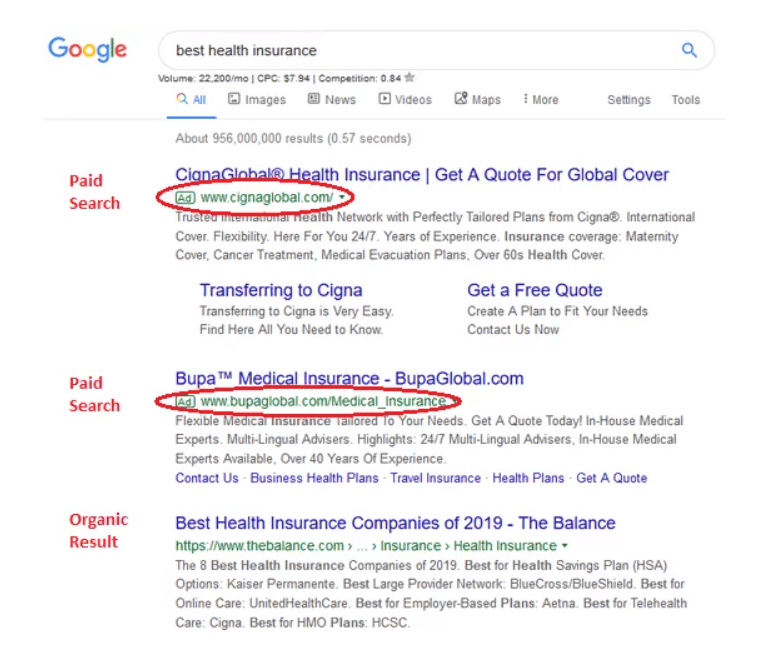
PPC advertising can also include display ads on websites and social media platforms and can be highly targeted to specific demographics and interests. It can be a great way to reach patients in your local area.
The cost of PPC ads can vary depending on the platform and the competition for specific keywords. But the main advantage is that you only pay Google when someone clicks on your ad. It makes it a cost-effective way to drive traffic to your website and increase conversions.
What is Social Media Marketing (SMM)?
Social Media Marketing (SMM) promotes a product or service on social media platforms such as Facebook, Instagram, Twitter, and LinkedIn. It involves creating and sharing content and running paid advertising campaigns on these platforms to reach and engage with the target audience.
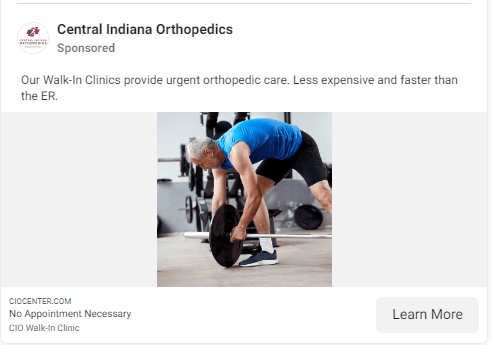
Paid advertising on social media allows healthcare providers to target precise demographics, such as age, gender, location, and interests. This can be particularly useful for reaching people who live in a specific area or are interested in a specific health condition. formats
Additionally, social media platforms offer a variety of ad types, such as image and video ads, that can be used to promote healthcare services and educate potential patients about the benefits of different treatments.
2. Invest in Healthcare Search Engine Optimization
Search Engine Optimization (SEO) is optimizing a site to improve its visibility in search engine results pages (SERPs) for specific keywords.
SEO involves a variety of techniques, such as:
- Creating keyword-enriched, high-quality content,
- building quality backlinks,
- optimizing website structure and meta tags
- Optimizing Visual content: adding alt image text and smaller image size.
- Using logical and short URLs
- Targeting local keywords
For healthcare providers, SEO can be a powerful tool for increasing visibility and driving more website traffic. By optimizing their websites for relevant keywords, healthcare practices can make it easier for potential patients to find them online.
There are a few SEO tips that healthcare providers can use to increase visibility and grow their practice:
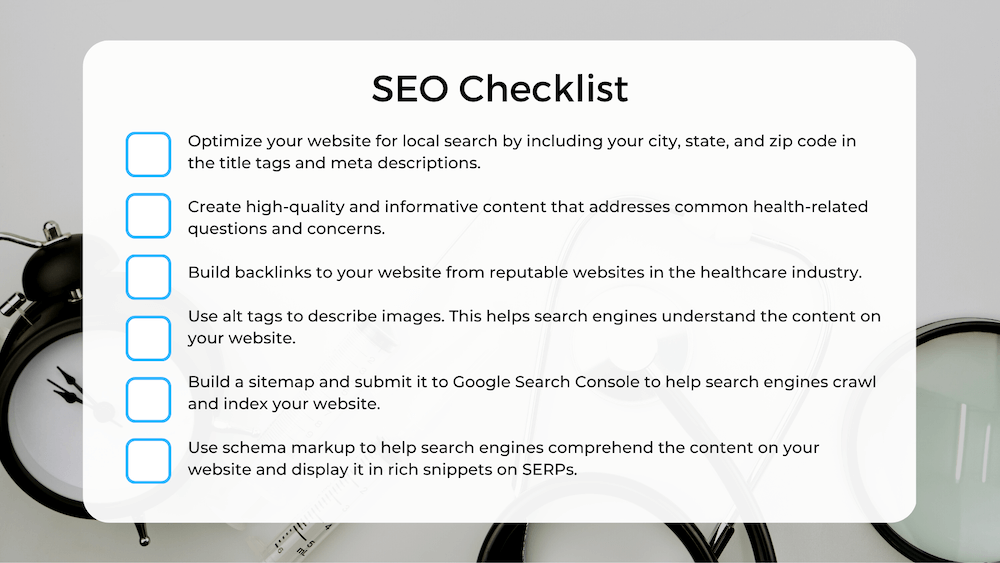
- Optimize your website for local search by including your city, state, and zip code in the title tags and meta descriptions.
- Create high-quality and informative content that addresses common health-related questions and concerns.
- Build backlinks to your website from reputable websites in the healthcare industry.
- Use alt tags to describe images. This helps search engines understand the content on your website.
- Build a sitemap and submit it to Google Search Console to help search engines crawl and index your website.
- Use schema markup to help search engines comprehend the content on your website and display it in rich snippets on SERPs.
These SEO tips help healthcare providers show up higher in search results. As a result, more patients will see your practice online and book more appointments at your clinic, boosting your ROI.
3. Create educational content with targeted Keywords
You can’t get website traffic without useful content. To optimize your healthcare website, you must create informative content based on the targeted medical keywords.
For your website to rank higher in search results, Google needs to understand what your website is about. And the great way to do that is by using relevant keywords throughout your website content.
It can be intimidating to brainstorm content ideas and where to put keywords if you have an entire website. However, here’s a quick tip: start with the main pages of your website’s navigation, such as:
- Homepage
- Services Areas
- About page
- Contact page
- Services
- Billing page
These are your most important website pages. So, they need to rank for the relevant keywords. At the same time, they should answer questions your site’s visitors might have.
What are keywords?
Keywords are the words or phrases people enter on search engines to look for information. In the case of healthcare SEO, “Physiotherapist near me” is an example of a medical keyword.
To measure the success of your SEO, look at how many keywords your site ranks for. And how much quality leads or traffic you get from those keywords.
How to find relevant medical keywords?
To find the right medical keywords, use keyword research tools like Google Keyword Planner, Ahrefs, or SEMrush.
These keyword research tools will give you a list of related keywords with monthly search volume. Just enter a seed (main) keyword related to your healthcare practice, such as “dentist” or “chiropractor.” Click on View all to find the full list of keywords.
Following are some tips to remember while researching relevant keywords:
Use long-tail keywords
Long-tail keywords are simply longer and more specific phrases related to your main keyword. They usually have low search volume, but they’re easier to rank for.
For example, “physiotherapy for back pain” is a long-tail keyword. It’s more specific than just “physiotherapy” and has fewer monthly searches.
Use location-based keywords
Location-based keywords are keywords that contain a city or region name. They help you target local patients. For example, “chiropractor in Brooklyn” is a location-based keyword.
Use questions as keywords
People use Google to find answers to their questions. So, it’s important to use questions as keywords. For example, “how to get rid of acne” or “what is the best treatment for back pain.”
A good question-based keyword example is “can a chiropractor help a pinched nerve.” It is easy to rank for and has 1600 monthly searches.
Use keyword-rich titles and descriptions
Include relevant keywords when creating titles and descriptions for your website’s pages and blog posts. This is one of the most critical on-page SEO factors.
Including keywords in your meta titles and descriptions helps Google understand what your pages are about. It also helps improve your click-through rate (CTR) from the search results.
4. Use messaging apps
Messaging apps are effective tools for healthcare marketing. They can be used to connect with potential and existing patients, providing them with the information they need to make informed healthcare decisions.
These apps enable you to reach patients where they are. Many patients are already using messaging apps daily, making it easy for doctors to connect with them.
Additionally, messaging apps allow for real-time two-way communication. You can provide patients with answers to their health-related questions, schedule appointments, and share educational content.
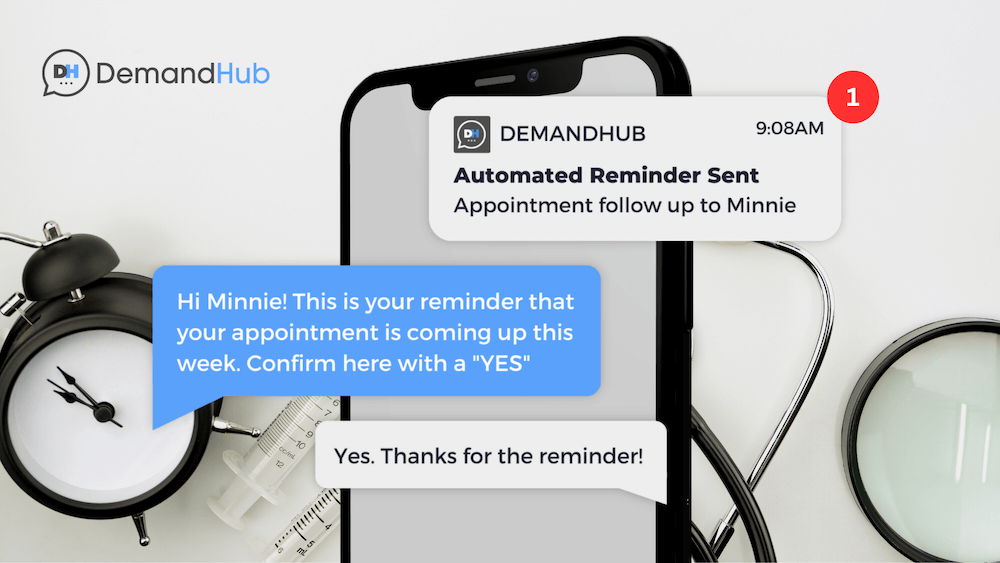
Think of apps like WhatsApp, Facebook Messenger, WeChat, and many others. These apps can be integrated with chatbot technology, which allow friends and family to communicate.
A word of caution!
These apps are not HIPAA-compliant. It means they do not meet the security standards of the Health Insurance Portability and Accountability Act (HIPAA) for protecting patient information.
Doctors and clinics must use a secure messaging system specially designed to comply with these standards.
One such messaging system is DemandHub. It is a HIPAA-compliant text messaging platform specifically designed for healthcare practices. It allows healthcare providers to communicate with patients securely and compliantly.
DemandHub also provides features such as online scheduling, contactless payments, Webchat, and automated text messaging.
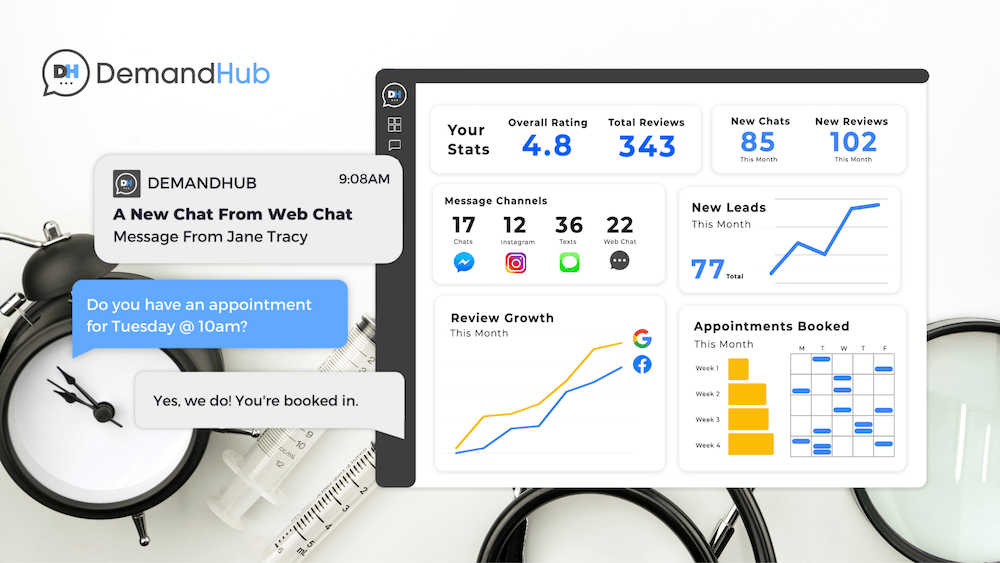
By using a HIPAA-compliant messaging system like DemandHub, healthcare providers and doctors can ensure that their patient information is protected and complies with federal regulations.
By doing so, they can provide a secure and convenient way to communicate with patients, helping to improve the overall patient experience.
5. Use Email marketing
Unlock the potential of your patient base with the power of email marketing. Healthcare email marketing allows you to connect, reach and engage with patients.
Doctors and practices can promote their services, share educational content, and build relationships with patients by sending targeted, informative, and engaging emails.
Email marketing allows you to segment your email list and send targeted emails to specific groups of patients. This list can be based on their health conditions, age groups, gender, etc.
For example, doctors can create different email lists for new patients, existing patients, and patients who have shown interest in a specific service or treatment. This allows you to send targeted messages relevant to each group and boost patient engagement.
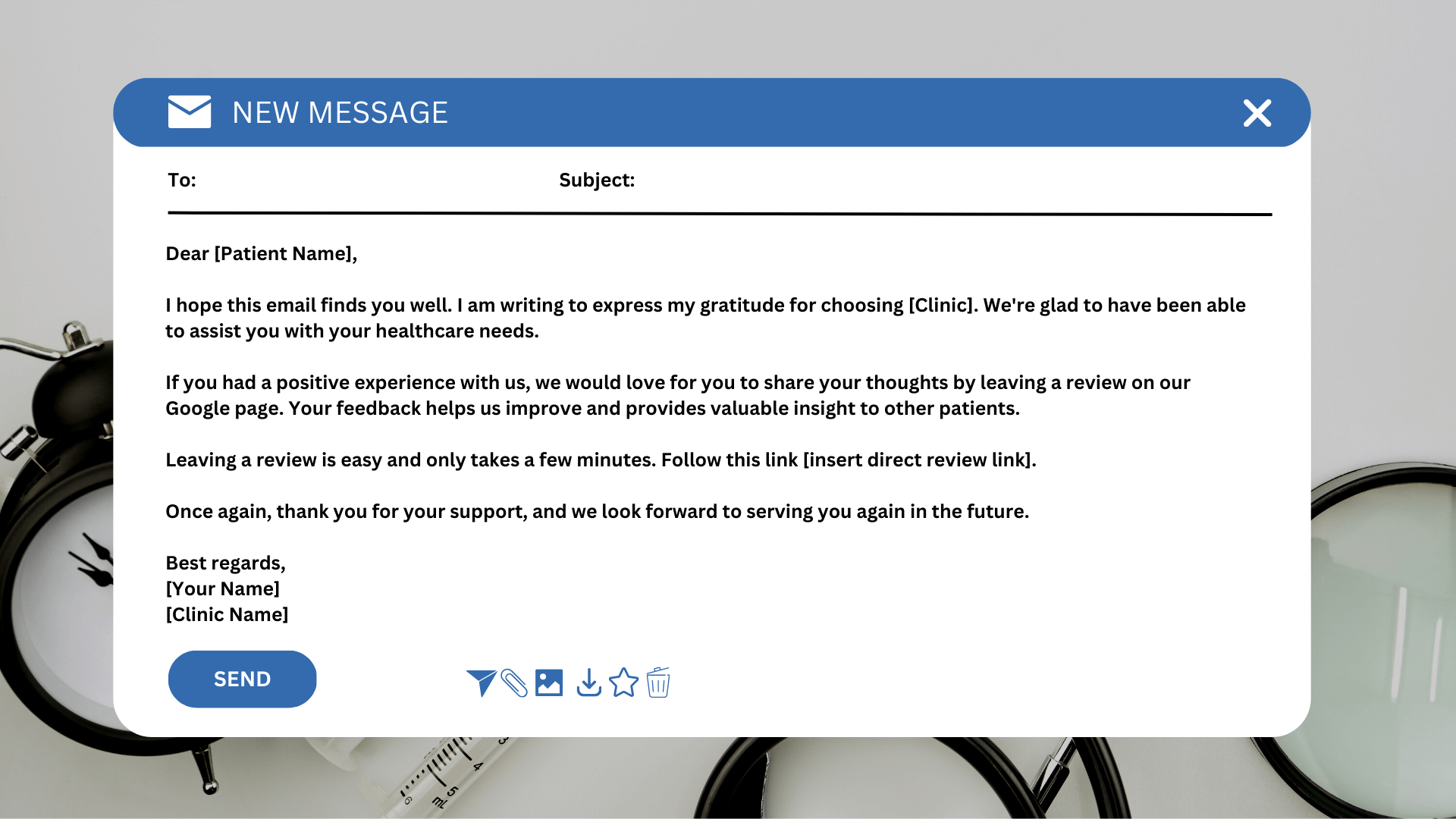
You can even track and measure the success of your email campaigns. Email marketing platforms such as Constant Contact and MailChimp provide detailed analytics on open rates, click-through rates, and conversions.
These insights help you to measure the effectiveness of different campaigns and allow you to make adjustments as needed.
You can also provide patients with educational content through emails, such as articles and videos, on various health-related topics. This can establish you as an authority in your field, build patient trust, and boost your ROI.
You can also promote special offers, events, and new services to patients via email.
6. Referral Programs
A healthcare referral program is a marketing strategy where patients are encouraged to recommend a healthcare provider or facility to their friends and family.
Word-of-mouth recommendations are powerful and can help attract new patients to the practice.
An effective referral program is designed to build trust and establish a sense of community among patients. You can offer incentives such as discounts or rewards to patients who refer new clients.
However, these incentives should be within the scope of local regulations and supervisory boards. And the referral program should be well-communicated to patients and easy to participate in.
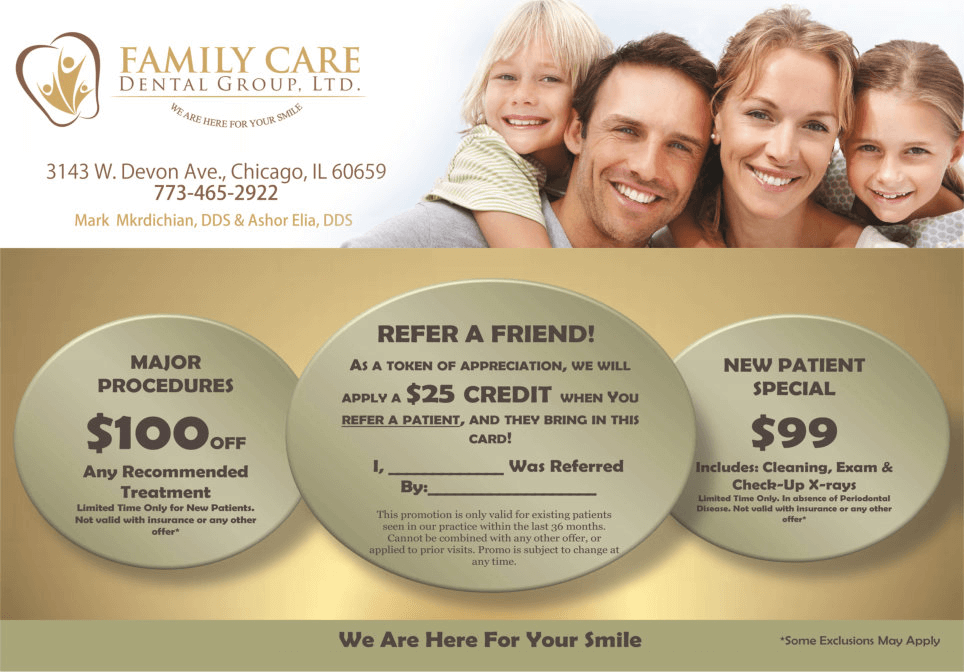
Some examples of healthcare referral programs are:
a. Refer-a-Friend Program
It is a simple referral program where doctors give existing patients a referral code or a referral card to share with friends and family.
When the referral card is presented at the time of their first appointment, the referring patient is given a discount or a reward.
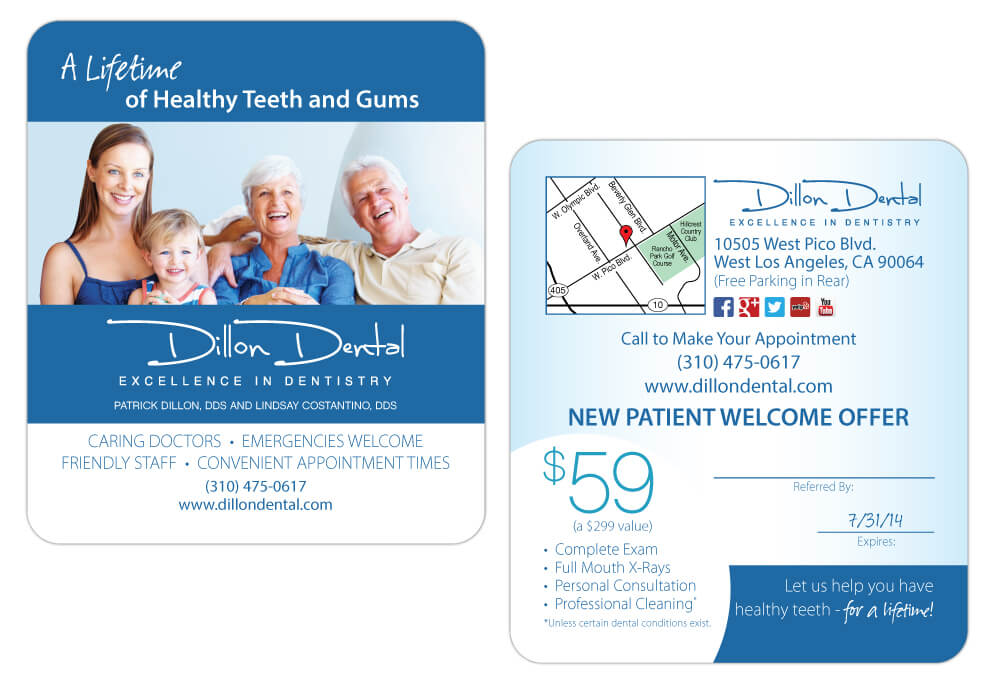
b. Patient Loyalty Program
It is a referral program that rewards patients for loyalty and for referring new patients. Patients can earn points for each visit and each referral and redeem them for discounts or special offers.
The program’s goal is to encourage patients to return to the practice and refer their friends and family. It is an effective way to build a sense of community among patients and boost patient retention. It can also help attract new patients by offering incentives for referrals.
c. Community Outreach Program
This program encourages patients to refer new patients from under-served communities, such as low-income families or elderly patients. These referrals may be rewarded with discounts or waived fees for the referred patient.
Community outreach referral programs effectively reach out to people who may not have access to healthcare services.

d. Physician-based referral program
It is a referral program that incentivizes physicians to refer their patients to other specialists within their practice or healthcare system. This can be done by offering bonuses or other incentives to physicians who refer the most patients.
The goal is to enhance patient care by creating a seamless referral process, allowing physicians to easily refer patients to the right specialist without any delay.

e. Social media referral program
This program uses social media platforms to encourage existing patients to refer their friends and family to a healthcare provider or facility. The goal is to reach a wider audience and attract new patients.
The program provides patients with a referral link or code they can share on social media platforms. When someone signs up for an appointment or a consultation through the referral link, the patient who shared the link is rewarded with discounts, gift cards, or other incentives.
It is also a low-cost way to attract new patients, as it requires minimal effort and resources from the healthcare provider.
7. Build a robust and responsive healthcare website
The most stunning brick-and-mortar healthcare practice means nothing without a strong website. Your website is the first point of interaction for patients.
Patients judge your practice by the look and performance of your website, as 90% of users evaluate a business based on its website design.
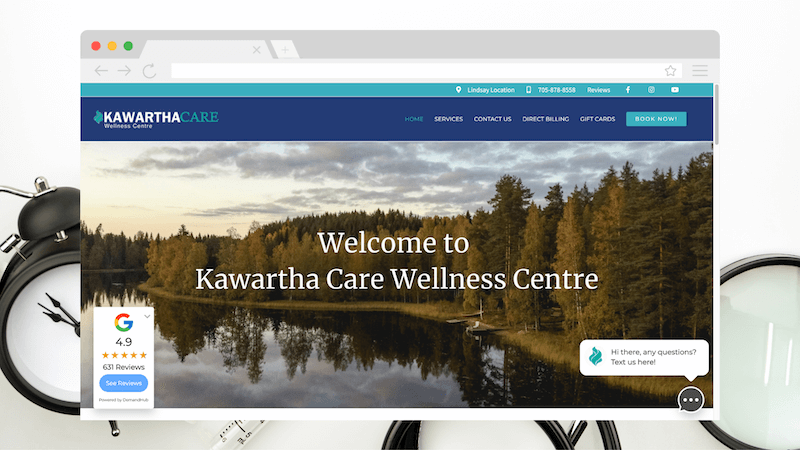
Be sure to design your website with the patient in mind. If your website design is unappealing and difficult to navigate, 38% of people will leave it and never return.
Use easy-to-navigate menus and a clean layout to attract new patients and improve patient retention. Your website should have the following:
- An engaging home page that accurately reflects your brand
- Responsive design to ensure optimal viewing on all devices
- Clear and concise calls-to-action (CTAs)
- Authoritative and compelling dental SEO content
- High-quality photos and videos of your dentists, staff members, and clinic environment
- Simple and easy online booking system
- Social proof, like patient testimonials and reviews
- Online chat and other messaging capabilities so patients can easily communicate.
Moreover, your healthcare website should be mobile-friendly to attract and retain patients.
There are 6.64 B smartphone users in the world today. So, if you want your patients to access your site on their smartphones easily, make your website mobile-friendly. You can use Google’s Mobile-Friendly Test tool to see if your website is mobile-responsive.
If not, consider investing in a responsive design or a separate mobile website. With a mobile-responsive design, your website will automatically adjust to fit any screen size.
A separate mobile website is a different version of your main website specifically designed for mobile users. You can redirect mobile visitors to your mobile website using a “mobile detect” script. Your dev team can help you with this.
Responsive design and separate mobile websites have pros and cons, so deciding which is right is important.
8. Claim Your Google My Business Page
Your Google My Business (GMB) page is one of the first places potential patients go to learn more about your practice. Make sure you take the time to fill out your GMB page with as much information as possible, including:
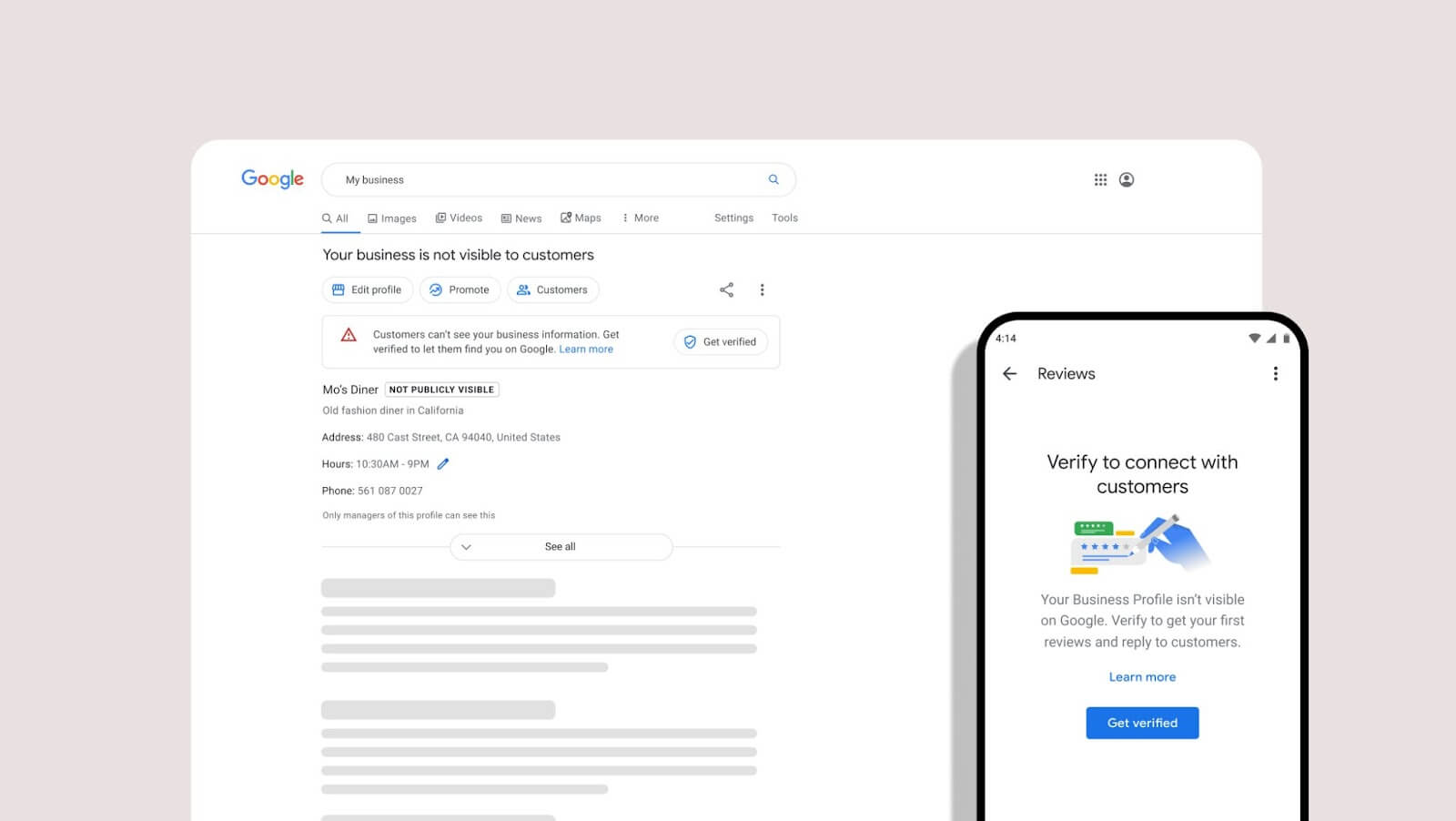
- Your practice’s name, address, and phone (NAP)
- Your website URL and any relevant social media links
- Business hours
- A description of your healthcare practice
- Services you offer
- Locations Served
- Images and videos of staff and practice
If you need help creating your Google My Business Profile, read our comprehensive blog for the step-by-step guide!
9. Leverage Social media
Social media allows you to connect with existing and potential patients on a personal level. It helps build trust and establish your practice as a reliable source of information.
It also enables you to reach a wider audience — including younger demographics who may not have previously been reached through traditional marketing methods.
Some of the healthcare marketing ideas for social media are:
Creating valuable and informative content
Social media is a great platform for healthcare providers to educate their audience about various health topics and share their expertise. By regularly posting relevant and informative content, doctors can establish themselves as a trusted source of information and build a loyal following.
Building a community
Social media platforms provide a great opportunity to connect with patients and other industry experts. Healthcare providers can engage in discussions, share ideas, and build relationships by creating a community of like-minded individuals. This can also create a sense of trust and loyalty amongst patients.
Leveraging user-generated content
Social media allows patients to share their experiences and feedback with others. By encouraging patients to share their reviews, healthcare professionals can leverage user-generated content to build trust and credibility with potential patients.
This can also provide a more personal touch and make patients feel more connected to the practice.
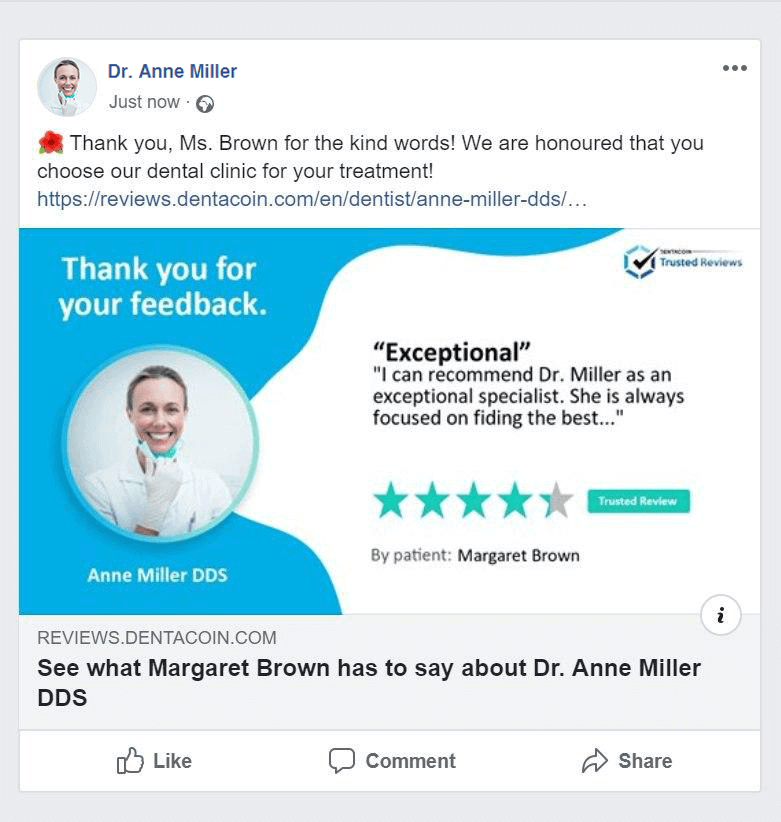
10. Build your Brand
Your brand is not just your logo or the name of your healthcare practice. It’s the promise you make to your patients, and it should reflect the values and culture of your practice.
Your brand will guide everything from your marketing strategy to your website and office design. It should convey a sense of your practice.
What feelings do you want your patients to relate to your practice? For example, do you want to be seen as the friendly neighborhood doctor or the high-end, luxury healthcare experience?
Creating a strong brand will make it easier for patients to remember you and choose you over other care providers.
Here are a few things to do when building your brand:
- Your target market: Who is your target audience? What are their needs and wants? Understand your patients’ needs before you can start creating a brand that resonates with them.
- Your unique selling point (USP): What differentiates you from other practices? Why should patients choose you over other doctors? Your USP gives you a competitive edge. For example, you could be the only care provider offering emergency appointments in your area or providing a new procedure that none of your competitors offer.
- Your brand voice: How do you want to communicate with your patients? Be consistent with the language you use across all your marketing channels.
- Your brand visuals: Your practice’s logo and website play a significant role in representing your brand. To ensure they’re professional and accurate, all branding elements, such as colors, fonts, office design, and staff uniforms, should be consistent with your brand.
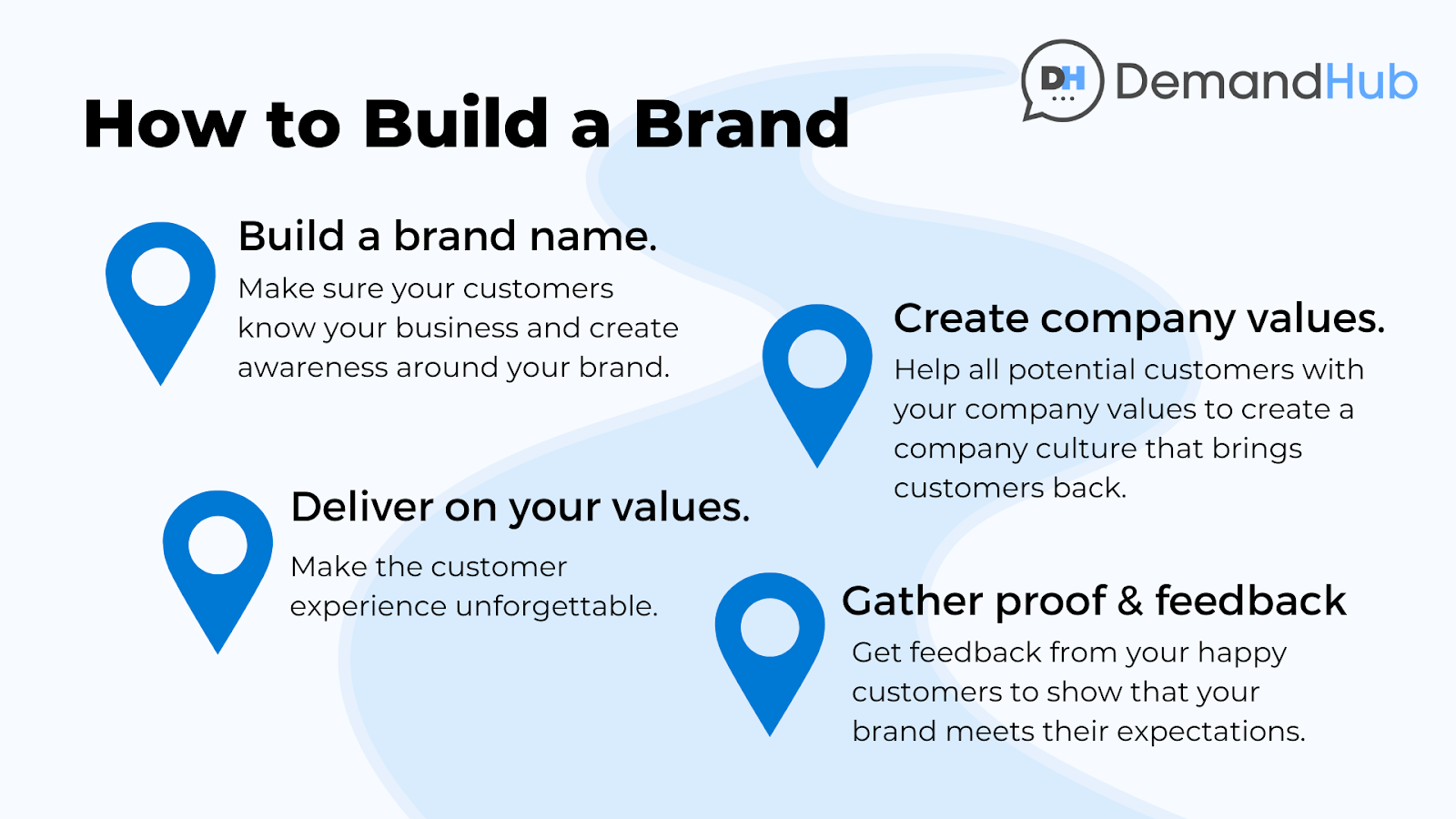
11. Ask for reviews
Patient reviews serve as social proof. It is one of the most powerful psychological factors when it comes to influencing people’s purchasing decisions.
A study shows that 93% of consumers say online reviews will affect their shopping preferences. According to BrightLocal, 98% of people read online reviews for local businesses.
If you want to win new patients, it’s important to focus on getting positive reviews from your existing patients. The ideal way to do this is to ask them.
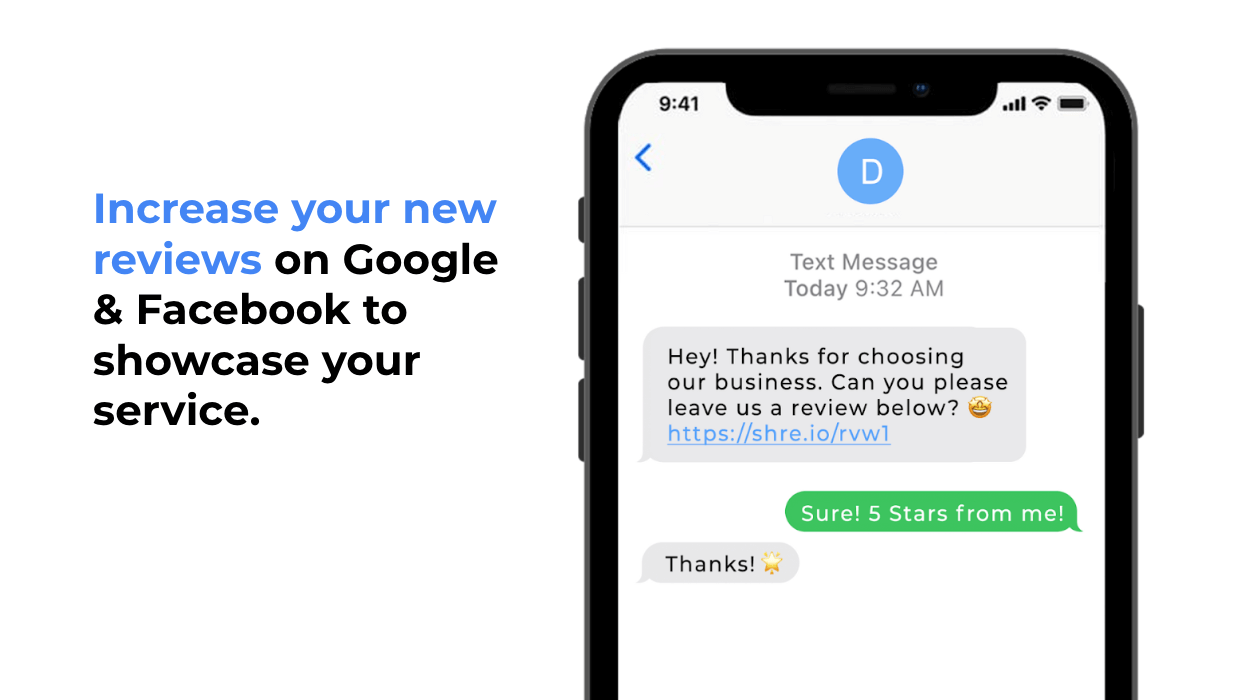
After a patient has completed treatment, take a few minutes to ask them how their experience was and if they would be willing to leave a review on Google, Yelp, or another platform. You can also include review links on your website, business cards, email signatures, or text messages.
12. Follow up with Patient feedback
Negative reviews are inevitable. When patients share a less-than-stellar review of your practice on review platforms, you should respond promptly and demonstrate you’re trying to fix the problem.
An effective and prompt follow-up will sway them to revise their review and highlight your quick solution to the problem.
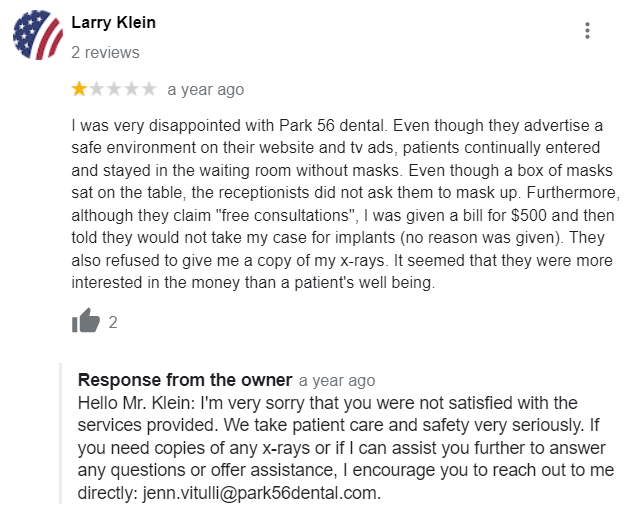
Incorporating reputation management into your healthcare marketing strategy is essential. But that doesn’t mean you should take negative reviews as a personal attack.
Instead, treat them as valuable opportunities for growth and improvement. Use them to enhance your clinic processes and upgrade equipment to deliver the best patient experience.
For a positive review, thank the patient for their feedback and for choosing your practice. A simple “Thank you for your kind words and for choosing us as your healthcare provider” or something similar would suffice.
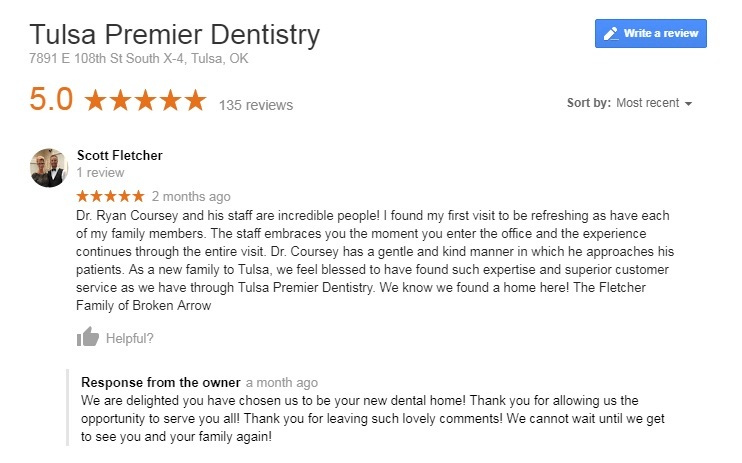
Respond publicly to the review to show future patients you value and appreciate positive feedback.
12. Influencer marketing
Healthcare and medical topics are becoming increasingly popular on social media platforms like Instagram and TikTok. Influencers use these platforms to share useful information on their health challenges and offer experienced advice to their followers.
The personal touch of sharing a medical journey forms an emotional link between the influencer and their followers. This increases the chances that an influencer’s followers will trust their recommended product or services.
According to a survey conducted by Google, 40% of millennials trust influencers more than their friends.

By tapping into the power of influencer marketing, healthcare providers can promote specific products and boost their overall brand image. A survey reveals that 57% of people consider a hospital’s social media presence when choosing where to receive care.
Additionally, healthcare organizations with a strong social media presence are perceived as using cutting-edge technology.
Also, 12.5% of healthcare organizations have reported that social media is a highly effective tool for attracting new patients.
By teaming up with top medical influencers, healthcare practices can take their social media presence to the next level and reach a wider audience while promoting their brand.
Here are a few ways to use influencer marketing for your healthcare practice:
- Partner with influencers in the healthcare industry: Identify influencers in the healthcare industry who align with your brand and have a following that matches your target audience. These influencers can help promote your products or services to their followers.
- Share patient stories: Partner with influencers who successfully used your products or services. Ask them to share their experiences with their followers. This can help build trust and credibility for your brand.
- Create educational content: Have influencers create educational content, such as videos or blog posts, that can help educate their followers on specific health conditions and treatments.
- Host giveaways and contests: Partner with influencers to host giveaways or contests to promote your products or services and encourage engagement.
14. Video marketing
Video marketing is becoming popular and is a great way to connect with potential patients. Video will account for 82% of all internet traffic by 2022 (Cisco, 2019). So, incorporate videos into your marketing strategy for maximum reach.
Consumers watch an average of 16 hours of online video per week. In addition, 84% said that watching a brand video had convinced them to buy a service or product!
You can create video content to educate and inform your patients. Some video marketing ideas for healthcare are:
- Explainer videos to teach your patients how to improve their overall health or any specific condition.
- Facility Tour videos can help demystify patients’ stress related to healthcare facilities and increase traffic to your website! For example, the following video from UCLA takes us on a tour of their Mattel Children’s Hospital, making it appear far less frightening for sick children.
| [Hospital Tour | UCLA Mattel Children’s Hospital](https://www.youtube.com/watch?v=ZFUG6KjirL8){:target=”_blank” rel=”nofollow”} |
- How-tos and Demo videos can show off the value of your healthcare-related product or service.
- Staff Interview videos to let your patients get to know your staff before they visit.
- Patients’ testimonials can provide reassurance, guidance, and valuable connection for your potential patients.
15. Communicate effectively
Effective and clear communication is an important part of hospital marketing strategies.
It promotes transparency and accountability, building trust and confidence in healthcare practice. It helps to convey important information about treatments, procedures, and costs.
Additionally, clear communication can help reduce confusion and misunderstandings, leading to better patient outcomes and satisfaction.
You can provide clear communication to patients by using a variety of techniques and strategies, such as:
- Using simple and easy-to-understand language: Avoid using technical jargon or medical terms that patients may not understand. Instead, use clear and simple language that is easy for patients to follow.
- Being empathetic and understanding: Listen to patients’ concerns and show that you understand their feelings. This can build trust and make patients more comfortable discussing their health issues.
- Using visual aids: Use diagrams, illustrations, and videos to help patients understand complex medical concepts and procedures.
- Encouraging questions: Encourage patients to ask questions and take the time to answer them fully and clearly.
- Providing multiple ways to communicate: Provide patients with multiple ways (their preferred ones) to communicate with you, such as phone, email, text, and video conferencing.
- Engage with Patients through social media: Doctors can also use social media to share information about their practice and services and provide educational information for their patients.
- Provide written materials: Provide patients with written materials such as brochures, pamphlets, and handouts that summarize important information about their condition, treatment options, and recovery process.
- Explaining the benefits and risks: Explain the benefits and risks of different treatment options so that patients can make an informed decision about their care.
By using these techniques, healthcare providers can help to improve communication with their patients and ultimately provide better care.
14. Content marketing strategy
A content marketing plan includes creating and sharing valuable content such as blog posts, videos, infographics, and social media posts. The goal is to educate and inform potential patients about health-related topics.
How to create a content marketing plan for your healthcare practice?
- Identify your target audience: Understand who your potential patients are and what their needs and concerns are.
- Define your goals: Decide what you want to achieve with your content marketing efforts. These goals can be: increasing website traffic, building trust, or promoting a new service.
- Research content topics: Research and identify topics of interest to your target audience.
- Create a content calendar: Plan out the content you will create and share and when you will share it. You can download a free content calendar template from Hubspot.
- Develop and produce content: Create high-quality, useful, and engaging content that addresses your audience’s needs and interests.
- Optimize your content for SEO: Optimize your content for search engines. Create keyword-enriched content. So it is more likely to be found by potential patients.
- Promote your content: Share your content on your website, social media channels, and other platforms where your target audience is active.
- Measure and analyze your results: Track your content marketing efforts and analyze the results to see what is working and what isn’t. Use Google Analytics to track and measure the success of your content marketing efforts. Track your PPC campaign’s success by setting up Google AdWords.
17. Manage Your Online Reputation
As a healthcare provider, it’s important to be aware of your online reputation. The internet is full of doctor review sites and social media platforms where patients can share their experiences.
So how can you manage your online reputation?
Encourage your patients to leave reviews on popular healthcare review sites. You can do this by sending patients follow-up emails or text messages with links to review sites after their appointments.
Then, monitor your online presence regularly to address any negative feedback quickly.
If the idea of managing your online reputation sounds daunting, worry not!
DemandHub is a reputation management software that can do the heavy lifting. It improves your online presence by earning more positive reviews for your practice.
Get more control over your digital footprint in an all-in-one convenient platform. Monitor your online reviews, respond to feedback and take proactive steps to grow your practice 10X.
With its benchmarking feature, you can get how you stack up against other medical practices in your area. It also offers tools and resources to help you improve your ratings and get more positive reviews.
With DemandHub’s modern messaging capabilities, you can start two-way conversations with your patients. Send messages with review links directly to patients and enable them to post a review in 30 seconds or less — all with just a few clicks.
Book your free demo today if you’re looking for an easy and effective way to manage your online reputation and grow your practice.
Frequently Asked Questions (FAQs) about Healthcare Marketing Strategies
Why are marketing strategies important in healthcare?
Marketing strategies are essential in healthcare as they help to increase visibility, attract potential patients, retain existing ones, and establish a strong brand image. They also help in educating the public about health issues and available services.
How has digital technology affected healthcare marketing strategies?
Digital technology has transformed healthcare marketing in many ways. It has made it easier for doctors and hospitals to share information and connect with patients. For example, they can use social media, emails, and websites to inform people about their services. They can also use online ads to reach more people. Plus, online reviews and ratings allow patients to share their experiences and help others make decisions. Digital technology also enables providers to understand their patients better by analyzing online data, which can help them improve their services.
What are some effective healthcare marketing strategies?
Some effective healthcare marketing strategies include content marketing to provide valuable information, SEO to increase online visibility, and social media marketing to engage with patients. Email marketing is helpful for direct communication, and online reputation management helps to build trust.
What are marketing strategies for healthcare?
Healthcare marketing strategies allow doctors and hospitals to get the word out about their services. Here are a few examples:
- Website: Having a good website helps people learn about the services offered, the team, and how to make an appointment.
- Social Media: Doctors and hospitals can use sites like Facebook and Instagram to share health tips and updates about their services.
- Email Newsletters: Sending regular emails can keep patients informed about new services, health tips, or upcoming events.
- Online Ads: Ads on websites or social media can help reach more people who might need their services.
- Patient Reviews: Encouraging happy patients to leave reviews online can help attract new patients.
What are the 4 types of marketing strategies?
The four types of marketing strategies, often referred to as the 4 P’s of marketing, are Product (or service), Price, Place, and Promotion. In a healthcare setting, this translates to the services offered, the pricing structure, the location and accessibility of the healthcare facility, and how the services are advertised and promoted.
What are the 5 ways of marketing strategy?
The 5 ways of marketing strategy often refer to the 5 C’s of marketing: Customer, Company, Competitors, Collaborators, and Climate. This involves understanding your target patients, knowing your healthcare institution’s strengths and weaknesses, studying your competition, building partnerships, and considering the overall market environment.
What are the 7 steps of marketing strategy?
The 7 steps of a marketing strategy include:
- Conducting market research,
- Identifying the target market,
- Analyzing competition,
- Defining unique value proposition,
- Determining marketing mix (4 P’s),
- Creating a budget,
- Measuring results. These steps help in creating a robust marketing plan that can drive growth and patient satisfaction.




